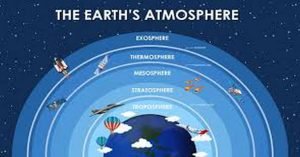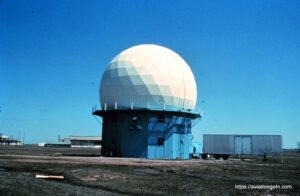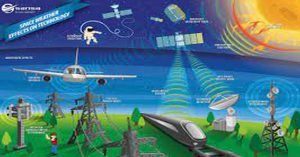Weather systems are an integral component of avionics systems, helping to ensure the safety, efficiency, and effectiveness of flight operations. From commercial airliners to military aircraft, the need for accurate and timely weather information cannot be overstated. In the realm of aviation, understanding and navigating weather systems is a matter of life and death. This article delves deep into the integration of weather systems in avionics, detailing their significance, functionalities, and the future prospects of such systems.
Weather Systems as The Components of Avionics Systems

1. Introduction to Avionics Systems
To appreciate the role of weather systems in aviation, it’s essential to understand the broader context of avionics. Avionics is a portmanteau of ‘aviation’ and ‘electronics’, and it encompasses all the electronic systems and devices used in aircraft, satellites, and spacecraft. These systems serve various purposes, from communication and navigation to collision-avoidance and flight control.

2. The Crucial Role of Weather Systems
Every pilot, whether flying a small private plane or a massive commercial jetliner, must consider the weather. Weather affects visibility, air pressure, wind patterns, and temperature—all factors that can influence an aircraft’s performance.
2.1 Flight Safety: Weather phenomena, like thunderstorms, turbulence, icing, and gusty winds, can pose significant threats to an aircraft. Accurate weather systems in avionics help pilots anticipate and avoid such hazardous conditions.
2.2 Efficient Route Planning: By having up-to-date weather data, pilots can adjust flight paths for fuel efficiency, taking advantage of favorable wind conditions, and avoiding areas of turbulence or storms.
2.3 Smooth Operations: Accurate weather prediction ensures smoother operations on the ground too. Airports can better manage takeoffs, landings, and ground traffic by knowing the weather conditions in advance.

3. Components of Weather Systems in Avionics
3.1 Weather Radars: Perhaps the most recognizable weather tool in aviation, onboard weather radars emit radio waves. When these waves hit a raindrop or other particle, they bounce back to the radar, giving pilots a visual representation of weather systems in their path.
3.2 Lightning Detection Systems: These systems alert pilots to nearby lightning activity, which often indicates thunderstorms—a severe hazard in aviation.

3.3 Turbulence Detection: Advanced radars can also detect turbulence, which can be especially dangerous during the critical phases of flight, such as takeoff and landing.
3.4 Ice Detection and Prediction Systems: Ice accumulation on wings or other aircraft surfaces can significantly compromise the aircraft’s performance. These systems alert pilots to icing conditions.

4. The Integration of Weather Data with Other Avionics Systems
Weather systems don’t operate in isolation. Their data integrates with other avionic components, creating a holistic picture for the pilot.
4.1 Flight Management Systems (FMS): An FMS can adjust the aircraft’s route in real-time, considering the latest weather data to ensure the most efficient and safe path.
4.2 Ground Proximity Warning Systems (GPWS): Poor weather can compromise visibility, making terrain a significant threat. Integrating weather data with GPWS ensures pilots receive timely warnings about potential ground collisions.
4.3 Traffic Collision Avoidance Systems (TCAS): In congested airspaces, poor weather can make visual identification of other aircraft challenging. Integrated systems ensure that pilots remain aware of nearby aircraft even in poor visibility.

5. The Future of Weather Systems in Avionics
With technological advancements, the role of weather systems in avionics continues to evolve.
5.1 Advanced Prediction Algorithms: As AI and machine learning become more sophisticated, so will weather prediction algorithms, providing even more accurate forecasts.
5.2 Real-time Data Sharing: In the future, aircraft could share weather data in real-time, providing a more comprehensive picture of the skies and further enhancing safety.
5.3 Enhanced Integration: The trend is towards more integrated avionic systems, where every piece of data, including weather, plays a part in decision-making processes, potentially even allowing for autonomous adjustments to flight plans based on weather conditions.

6. Conclusion
Weather systems are undeniably a cornerstone of avionic systems. As aviation technology progresses, the synergy between weather monitoring and avionics will only strengthen. The ultimate goal remains unchanged: to ensure the utmost safety and efficiency of flight operations in the face of the ever-unpredictable weather.
While this article provides an overview of the topic, the world of avionics is vast and ever-evolving, with weather systems playing a pivotal role in the safety and efficiency of global aviation.
See more:
